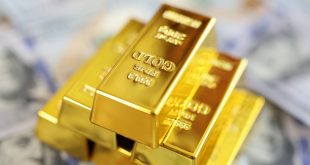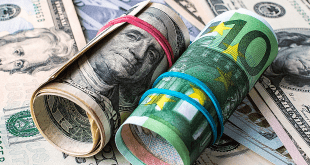Interviewed by Dubai TV, Mohammed Hashad, Head of Research and Development Department at Noor Capital and member of the US Association of Technical Analysts, commented on the interest rate expectations of the European Central Bank, which holds its monetary policy meeting next Thursday. Hashad also touched with analysis a number of other important questions, and highlighted the most prominent events and expected data on this week’s economic calendar.
Initially, Hashad stressed that one of the most important economic indicators that traders are closely following, this week, is what Christine Lagarde and the European Central Bank’s monetary policy makers team will decide during the next meeting. He noted that markets are awaiting the European Central Bank’s meeting regarding setting their interest rates, and he pointed out that expectations so far indicate that Christine Lagarde will not touch interest rates and is expected to keep them unchanged, especially in light of the recent slowdown in the Eurozone.
Hashad also believes that one of the most important indicators that traders and investors should follow is the preliminary reading of the PMI services manufacturing index in France and Italy, in addition to the index of preliminary estimates of Gross Domestic Product from the United States. Finally, it is also necessary to follow the interest rate statement of the Bank of Canada and the press conference that follows it.
Asked about oil prices and whether expectations point that by the end of the year there will be a decline that reaches the equilibrium stage, and what is the expected scenario if the escalation and current tensions in the Middle East should continue, and whether oil prices are expected to witness fluctuations or will exceed all these equations and expectations, Hashad stressed that in the markets, all scenarios are usually on the table, especially in light of the state of uncertainty, and there is evidence of this witnessed in the markets last week, as oil prices recorded significant increases above one percent, but at the beginning of this week oil began its trading with decline of approximately one percent.
Hashad suggested that one of the most important reasons that supported this decline was the improvement in investor’s sentiment in general in the presence of international efforts to calm the situation in the Middle East region, adding: “But from my personal point of view, with the continuation of geopolitical tensions, if they continue in the long term, there may be serious retreat to approximately twenty percent of the oil supply movement, especially if the Strait of Hormuz is compromised.
“I believe we may see further increases that may exceed one hundred or one hundred and ten dollars, but all scenarios may be on the table and the United States is trying at this time to put pressure on oil prices. American efforts included lifting some pressure on the Venezuelan side by lifting some restrictions and sanctions in an attempt to mitigate the rise in oil prices during the current period”, said Hashad.
As for gold, the markets witnessed slight declines at the beginning of the week, as well as rises in parallel with ten-year US Treasury bond yields. Price movements are usually according to an inverse function.
Asked whether he believes that these rises have come to an end now, and what he actually expects, Hashad pointed out that with the continuation of the ongoing conflict in the Middle East region that began on Saturday, October 7, observers noticed that gold achieved record gains, reaching a level approaching $2000 per ounce, and he added that the gains were estimated at about 6.5%, which is reminiscent of the peak of last August. This is the highest level for gold in 11 weeks.
Hashad pointed out that investor demand at the present time has increased to buy the precious metal as one of the most important safe-haven assets to hedge against market fluctuations, and that gold has benefited greatly during the recent period from the decline of the US dollar amid rising speculation in the markets that the Federal Reserve will not change interest rates in the next monetary policy meeting.
Hashad pointed out that there is a noteworthy situation regarding US Treasury bond yields, some of which are declining but some of which are rising, and so far, gold is preferred as one of the safe haven assets that generate a guaranteed return better than Treasury bond yields, but with the ongoing conflict in the Middle East continuing, there may be. Gold prices face further increases that may exceed the 2020 level of dollars per ounce in the near term.
Regarding whether the Federal Reserve might risk curbing US economic activity as monetary policy continues to tighten as part of its battle to rein in inflation, Hashad pointed to a set of recent indicators issued in the United States, whether retail sales, US jobs data, or inflation numbers that indicate that the US economy is still strong.
Hashad believes that the Federal Reserve may stop raising interest rates at the next policy meeting, but may raise interest rates until mid-2024, because the US economy is able to withstand such measures.
Home / Market Update / Commodities / Noor Capital | Mohammed Hashad Interview on Dubai TV – October 23
Tags BoC ECB FED Gold interest rate decision Lagarde Middle East tensions Oil Prices Treasury Yields
Check Also
GlobalFoundries’ MIPS Acquisition Reshapes Semiconductor Industry
A Strategic Leap GlobalFoundries’ acquisition of MIPS marks a bold step in the semiconductor industry. …
 Noor Trends News, Technical Analysis, Educational Tools and Recommendations
Noor Trends News, Technical Analysis, Educational Tools and Recommendations



